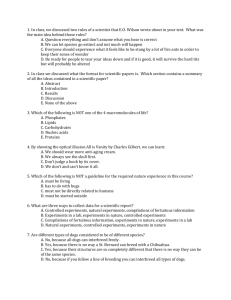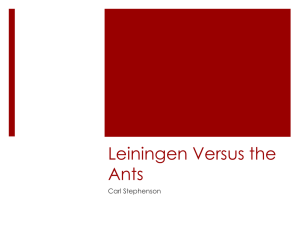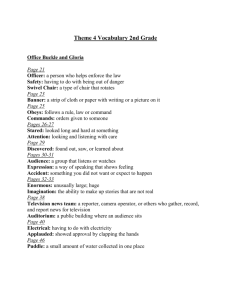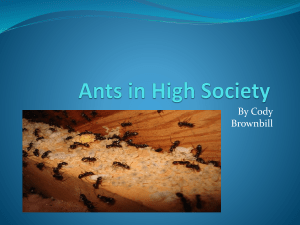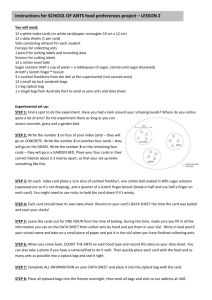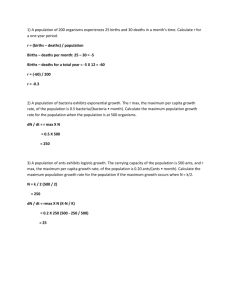oil compost
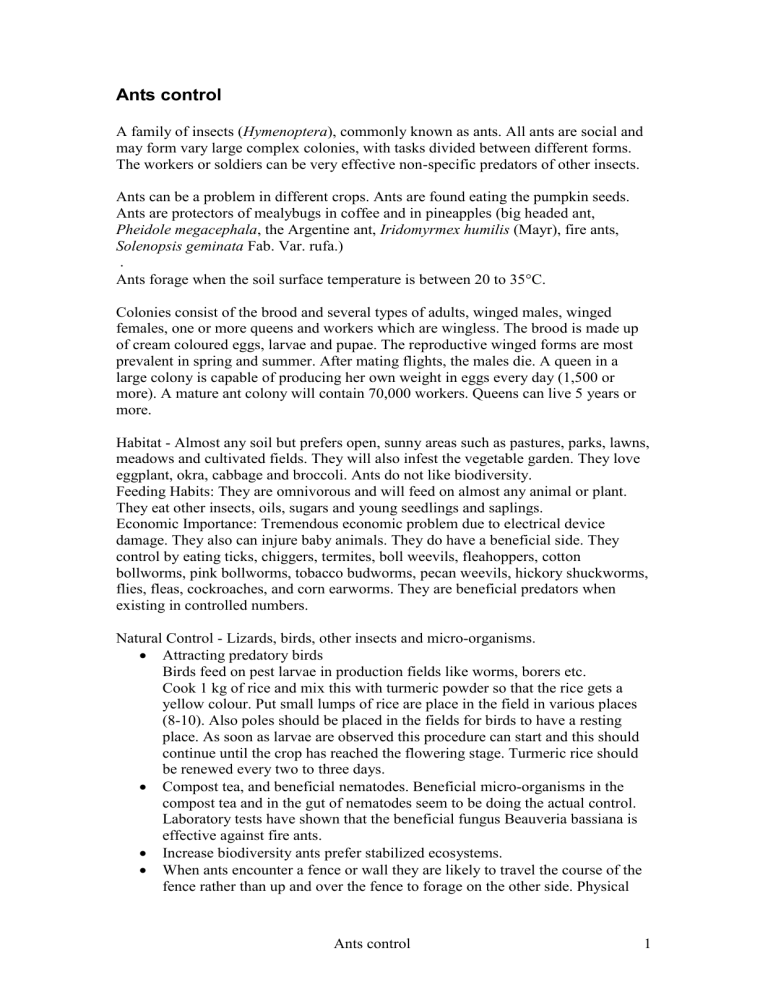
Ants control
A family of insects ( Hymenoptera ), commonly known as ants. All ants are social and may form vary large complex colonies, with tasks divided between different forms.
The workers or soldiers can be very effective non-specific predators of other insects.
Ants can be a problem in different crops. Ants are found eating the pumpkin seeds.
Ants are protectors of mealybugs in coffee and in pineapples (big headed ant,
Pheidole megacephala , the Argentine ant, Iridomyrmex humilis (Mayr), fire ants,
Solenopsis geminata Fab. Var. rufa.)
.
Ants forage when the soil surface temperature is between 20 to 35
C.
Colonies consist of the brood and several types of adults, winged males, winged females, one or more queens and workers which are wingless. The brood is made up of cream coloured eggs, larvae and pupae. The reproductive winged forms are most prevalent in spring and summer. After mating flights, the males die. A queen in a large colony is capable of producing her own weight in eggs every day (1,500 or more). A mature ant colony will contain 70,000 workers. Queens can live 5 years or more.
Habitat - Almost any soil but prefers open, sunny areas such as pastures, parks, lawns, meadows and cultivated fields. They will also infest the vegetable garden. They love eggplant, okra, cabbage and broccoli. Ants do not like biodiversity.
Feeding Habits: They are omnivorous and will feed on almost any animal or plant.
They eat other insects, oils, sugars and young seedlings and saplings.
Economic Importance: Tremendous economic problem due to electrical device damage. They also can injure baby animals. They do have a beneficial side. They control by eating ticks, chiggers, termites, boll weevils, fleahoppers, cotton bollworms, pink bollworms, tobacco budworms, pecan weevils, hickory shuckworms, flies, fleas, cockroaches, and corn earworms. They are beneficial predators when existing in controlled numbers.
Natural Control - Lizards, birds, other insects and micro-organisms.
Attracting predatory birds
Birds feed on pest larvae in production fields like worms, borers etc.
Cook 1 kg of rice and mix this with turmeric powder so that the rice gets a yellow colour. Put small lumps of rice are place in the field in various places
(8-10). Also poles should be placed in the fields for birds to have a resting place. As soon as larvae are observed this procedure can start and this should continue until the crop has reached the flowering stage. Turmeric rice should be renewed every two to three days.
Compost tea, and beneficial nematodes. Beneficial micro-organisms in the compost tea and in the gut of nematodes seem to be doing the actual control.
Laboratory tests have shown that the beneficial fungus Beauveria bassiana is effective against fire ants.
Increase biodiversity ants prefer stabilized ecosystems.
When ants encounter a fence or wall they are likely to travel the course of the fence rather than up and over the fence to forage on the other side. Physical
Ants control 1
barriers such as ant fences running parallel to the field periphery are partially successful in keeping ants out of the field.
To control ants and other pests like fleas, termites, chinch bugs, ticks, crickets and grasshoppers:
Drench with the fire ant control formula - compost tea/molasses/citrus oil .
The homemade concentrate includes equal parts of compost tea, molasses and orange oil. Use 4-6 ounces of concentrate per 4.5 litre of water.
Spraying products that contain molasses helps keep them away.
Spray the site with a homemade citrus oil can be made by soaking citrus peelings in an equal amount of water for 10 days to two weeks. Adding garlicpepper tea makes the spray even more powerful. This same spray will also help control aphids, white flies, and mosquitoes. It will also kill beneficials so don’t use unless pests are a problem and don’t use more than the recommended rates of any of the citrus concentrates or risk burning plant foliage or even killing plants.
Spray the site at least monthly with a mixture of manure compost tea, seaweed, natural vinegar and molasses . Long term this is the only step necessary.
Seeds from unripe Annona ( Annona spp . soursop, custard apple or sweetsop) are ground. Soak the grounded seeds in water, use 40 grams for 1 litre of water. Leave the preparation overnight and filter the next day before spraying.
Treat individual mounds with 30 grams of citrus and a few drops of soap as a wetting agent using 4.5 litres of water. Treat each mound with this diluted mixture.
Sprinkle a few tablespoons of instant coffee over the mound or break through the hills into the tunnels and apply. Repeat this 3-4 times.
Crush large quantities of fresh Marigold flowers ( Tagetes spp) (roots and leaves can be added) and put this in water. Leave this for 5 to 7 days while stirring daily. Filter the mixture using a cloth. Dilute the mixture and add liquid soap (use soft soap used for washing dishes and not washing powders since these can harm plants). This is a effective solution against ants, aphids and grasshoppers. Preventative this should be applied once a week.
Soak Marigold ( Tagetes spp.) leaves and leaves and berries of Melia
azadirach (syringa, persian lilac) in water for 3 days. Filter the mixture and dilute the solution with water until it is pale green or brown. Spray against ants, mites and cabbage root fly.
Neem , Tephrosia and chilli can also prove effective in controlling ants.
Baits
With only few nests in the field it is possible to bait ants with a sugar solution with Tephrosia leaf powder to kill the ants. Care should be taken that no other mammals can eat from the bait.
Ants control 2

